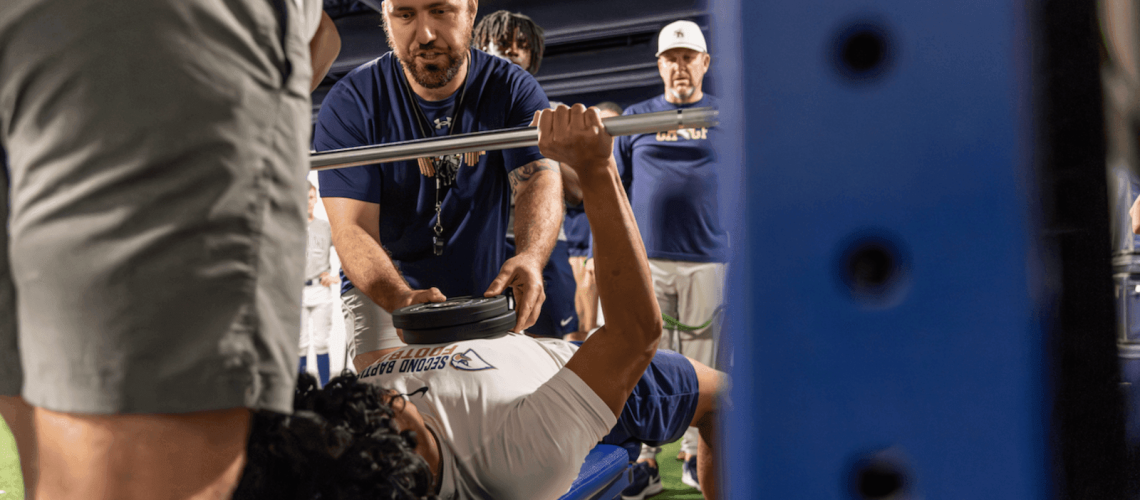By Nick Mascioli MS, CSCS
I made my share of mistakes in the early stages of my career as a strength & conditiong coach. Like many in the field, I started my career with grand aspirations. My early vision of what it would take to be a great strength and conditioning coach was rooted in education. I believed the key to success involved becoming a subject-matter expert—reading every book, staying on top of the latest research, and acquiring advanced degrees to build a solid theoretical foundation. I earned both undergraduate and graduate degrees, completed a certification in massage therapy, and sought out internships at elite institutions to deepen my expertise. My journey in the strength and conditioning world exposed me to various sectors, offering me invaluable insights into what an effective athletic performance program should look like.
There is nothing wrong with this approach; in fact, I’m grateful for each step that has helped shape me as a coach. However, when I transitioned to working in middle and high school athletics five years ago, my perspective on what truly matters in coaching evolved dramatically.
The Evolution of Coaching: Beyond Knowledge
While technical expertise remains the backbone of our profession, I’ve come to realize that coaching today requires far more than just knowing the science of strength and conditioning. The core of effective coaching lies in soft skills—things like problem-solving, simplifying complex systems to engage high school students, emotional intelligence, collaboration with sport coaches, and building relationships with students. These skills have played a bigger role in my development as a coach than I ever imagined.
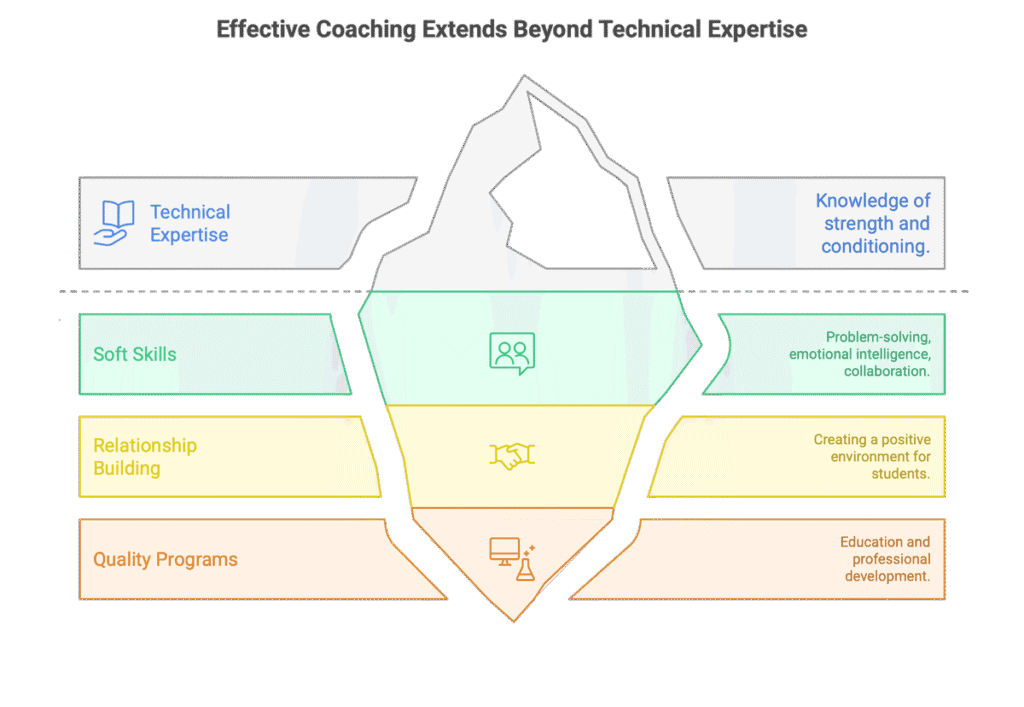
I will never underestimate the power of knowledge, but I’ve learned that a truly great coach must also create an environment that students want to be a part of. As the saying goes, “People don’t care how much you know until they know how much you care.” This is a truth that resonates deeply in today’s coaching landscape. However, I also believe that creating quality programs–grounded in solid education and professional development–is one of the most effective ways we can show students that we care. The emotional and educational aspects of coaching are equally important.
The New Challenge: Empowering Athletes in an Information-Overloaded Age
We are living in an age of unprecedented access to information, and this has fundamentally changed the dynamic between coaches and athletes. Just 15 years ago, students relied primarily on teachers and coaches to provide them with information. What we said went unquestioned, and there was an inherent respect for the process. Today, that dynamic has shifted. With the rise of social media and technology, athletes—particularly Generation Z—have access to a vast amount of information at their fingertips. They can watch elite athletes’ training routines, learn complex concepts, and even teach themselves advanced techniques. The challenge is that not all of this information is applicable to their current stage of development, and yet they are consuming it anyway.
This access to instant information creates a sense of skepticism among student-athletes. Instead of automatically deferring to the authority of the coach, they often question what we say, comparing it to the information they’ve already encountered online. As a result, coaches are now tasked with earning their buy-in in a way that may not have been necessary in the past.
Balancing Tradition with Modern Needs
As coaches, our instinct may be to take the “old school” approach and demand respect, grit, and hard work from our athletes. And I firmly believe these values are essential—today’s athletes are often less exposed to hard work and resilience than previous generations. But Tim Elmore, in his book Gen Z Unfiltered, offers an insightful perspective on how to approach this generation. He suggests that, as educators and coaches, we tend to operate on a “Blockbuster” model of leadership, when what we really need is a “Netflix” approach. In other words, instead of sticking rigidly to outdated methods, we need to adapt our coaching style to align with the realities of the digital age.
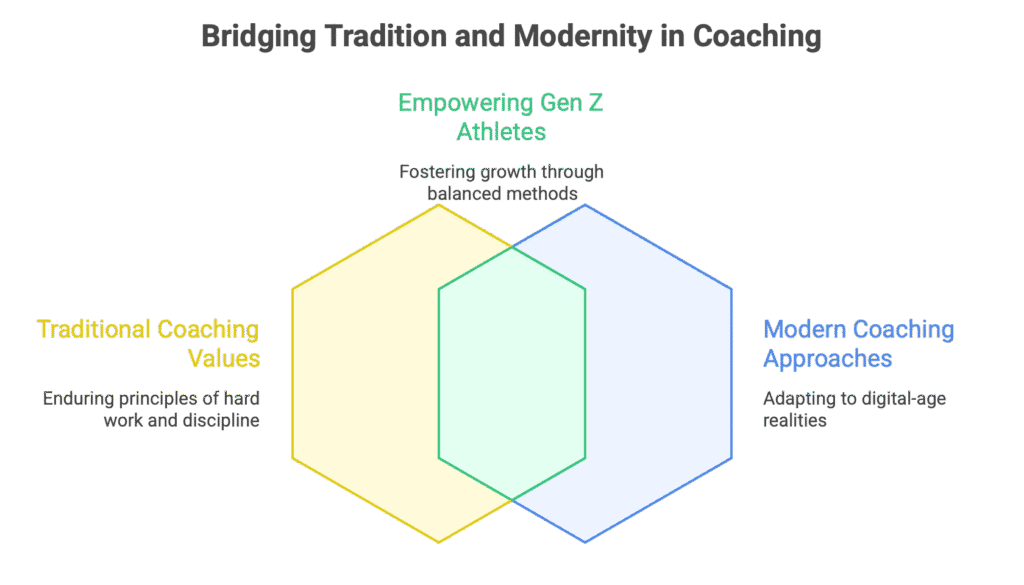
The lessons we’re trying to impart—hard work, ownership, responsibility—are just as important as ever. But the way we present these values, the packaging of our messages, must be different. We need to meet Gen Z where they are, not just in terms of their physical development, but also in their cognitive and emotional growth. This requires a delicate balance between empowerment and wisdom, between responsibility and privilege.
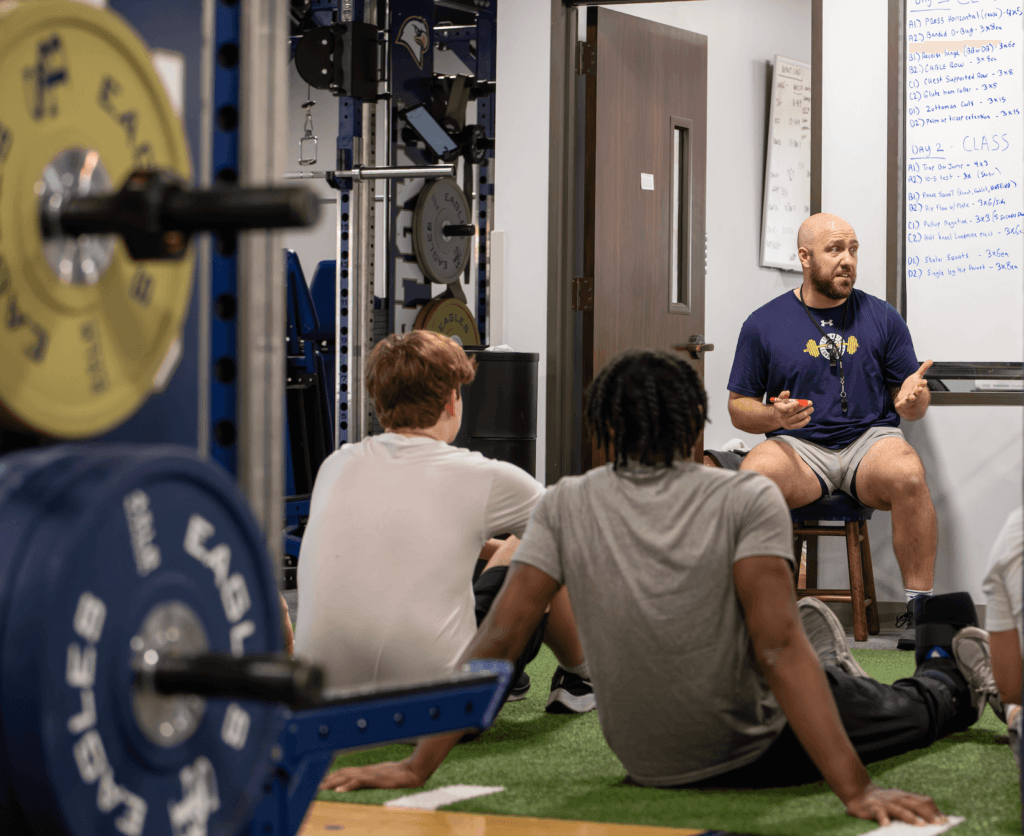
The Three Challenges of Coaching Gen Z Athletes
Tim Elmore outlines three key challenges we face when coaching Generation Z athletes, which I believe are essential to address if we are to effectively support their development. These challenges are:
- Empowerment Without Wisdom
- Privilege Without Responsibility
- Involvement Without Boundaries
Challenge #1: Empowerment Without Wisdom
Challenge (As Described by Tim Elmore):
Gen Z athletes are empowered by technology, but they often lack the wisdom that comes from real-world experiences. They are used to instant access to information but may not yet have the skills to apply that information meaningfully in the context of their personal growth or athletic development.
Solution in the Weight Room:
To address this challenge, we aim to teach athletes how to critically engage with technology—transforming the instant access to information into a tool for building wisdom and self-awareness. We do this by introducing them to velocity-based training (VBT), a method that provides athletes with real-time, objective feedback on their lifting performance.
Through VBT, athletes track the speed of their lifts and adjust their sets and reps based on their own data. This feedback doesn’t just tell them whether they’re lifting heavy or light; it gives them insights into how their body is responding to the load, allowing them to make informed decisions about the next set. They can choose to push harder, maintain intensity, or adjust their technique—all based on the data they receive. This process teaches athletes how to self-assess, self-correct, and make adjustments in real time. It fosters a sense of empowerment, but more importantly, it teaches them how to use information wisely and appropriately in the context of their own development.
Watch Athletes Turn Data Into Better Decisions
Moreover, we incorporate Partner Coaching as a way to build both technical and emotional intelligence. In Partner Coaching, students work together to observe each other’s form, providing feedback on what they see. This not only helps each athlete improve their own technique but also teaches them how to communicate effectively and apply feedback to improve someone else. When an athlete gives feedback, they must process the information and understand it in a deeper way, as they’ll need to explain it to their partner. This reinforces the critical thinking and problem-solving skills that help them learn from their experiences and apply knowledge beyond the weight room.
Transfer Skill to Life:
Information is only good when it’s used properly. Anyone can look up facts, but it takes wisdom to receive that information and use it to create real change. This applies to all areas of life, not just athletics. Whether you’re learning something new or acquiring skills for a job, your ability to apply that knowledge wisely is what will set you apart. Being informed is important, but using that information to make thoughtful decisions that lead to positive results is the true measure of empowerment.
Challenge #2: Privilege Without Responsibility
Challenge (As Described by Tim Elmore):
Growing up with technology has given Gen Z unprecedented access to resources, but with this privilege often comes a sense of entitlement. Many young athletes expect things to come easily or feel entitled to success without fully understanding that hard work is required to achieve it.
Gen Z Athletes Learn Responsibility Through Speed and Strength
Solution in the Weight Room:
In the weight room, we harness the power of data tracking and performance feedback to encourage self-accountability among our athletes. With the instant access to numbers, measurements, and performance metrics, Gen Z athletes quickly realize that the numbers don’t lie. If they’re skipping sets, slacking on reps, or not giving full effort, their performance data will reflect that.
By using tools like velocity-based training (VBT), heart rate monitors, and other performance trackers, athletes can see real-time feedback on their lifts, their effort, and their progress. This data allows us to have transparent conversations with athletes about their consistency, discipline, and effort. If an athlete’s data shows that they’ve missed targets or slacked off during training, we can directly tie that to their lack of progress.
This creates a natural self-accountability factor: When athletes see that their results are directly tied to the effort they put in, they begin to realize that there is no substitute for hard work and consistency. It’s not just about “showing up”—it’s about giving full effort every time.
Turning Data Into Development: Every Athlete’s Clear Path Forward
Transfer Skill to Life:
Information and resources are only valuable when combined with hard work and discipline. Data, tools, and opportunities mean nothing if there isn’t a desire to grow and become a better person. In life, the same principle applies: Success and growth are built on the foundation of consistent effort and the desire to improve. Always be curious and committed to learning. Don’t just consume information—apply it with discipline and a sense of responsibility to become the best version of yourself.
Challenge #3: Involvement Without Boundaries
Challenge (As Described by Tim Elmore):
Many Gen Z athletes struggle with anxiety, stress, and a lack of clear boundaries—issues exacerbated by constant connectivity. The pressure to always be “on” can lead to burnout and emotional exhaustion.
Solution in the Weight Room:
In a world of constant connectivity and “always on” demands, we help athletes establish healthy boundaries using technology as a tool for autoregulation. Instead of pushing athletes to always train at maximum intensity, we teach them that the body is not always going to be at 100% every day. And that’s okay. With the help of technology, particularly data tracking systems, we can teach athletes to listen to their bodies and adjust their training accordingly.
Autoregulation in Action: Effort, Boundaries, and Balance
Using tools like velocity-based training (VBT), heart rate monitors, and other performance trackers, athletes can assess their energy levels and training capacity in real time. This helps them understand when they need to push harder and when they need to pull back. By making decisions based on data, athletes learn to self-regulate and maintain a balance that protects their long-term health and well-being.
Transfer Skill to Life:
Use information to pause and play. In a society that tells us to always be “on,” it’s important to recognize the value of stepping back and resting. It’s okay to take a break, recharge, and enjoy life. Be present with your family, nurture relationships, and prioritize your well-being. Life and work will always be there for you, but moments of rest and reflection are crucial for long-term success and happiness. Use the data and knowledge you have to create balance, not just hustle.
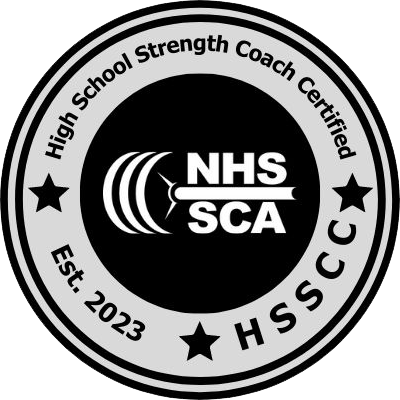
The High School Strength Coach Certified (HSSCC) framework doesn’t just equip coaches with training programs—it develops the soft skills needed to connect with today’s athletes. The principles featured in this article, from teaching intent and accountability to guiding athletes through feedback and decision-making, are woven into the certification. Coaches who complete the HSSCC learn how to program with purpose and how to communicate, mentor, and empower Gen Z athletes in a world overflowing with information.
Conclusion: Coaching Beyond the Athlete
At the end of the day, we want to see our athletes thrive. For many, the title of “athlete” is the most important identity they hold, and that’s true for a handful of our students. They are driven by competition, performance, and the pursuit of excellence. But it’s crucial to remember that as much as sport is a vital part of their lives, it is only a small portion of their overall journey. For most of our athletes, their time as competitive athletes will eventually come to an end—whether that happens at the high school level, college, or even earlier.
With that in mind, my approach to coaching has always been about asking the right questions, and the first ones I ask are not centered on the athlete, but on the person. I always start with:
- How does this impact my athletes’ daily life as human beings?
- How does this support their physical fitness and well-being?
- Only then, do I ask: How does this impact them as athletes?
This shift in perspective has profound implications on how we program, how we coach, and how we use the tools at our disposal—especially data and technology. As coaches, we have the power and responsibility to teach our athletes to use these tools to make informed decisions—not just for today’s workout, but for the rest of their lives.
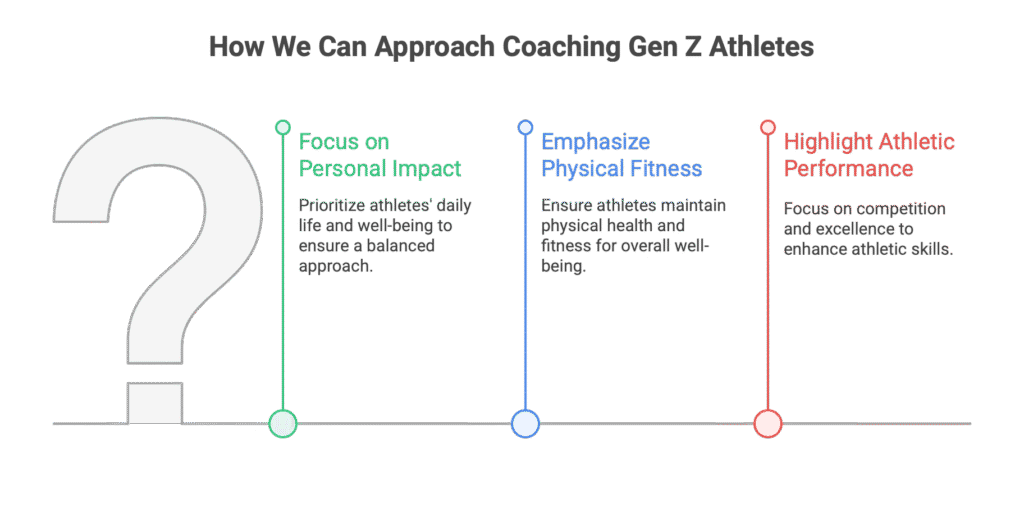
When we teach students how to self-regulate, listen to their bodies, and interpret data, we are doing more than improving their performance in the weight room. We are giving them the skills to navigate life with self-awareness, responsibility, and resilience. We are showing them how to make informed decisions that will carry over beyond the gym—whether it’s managing stress, making thoughtful choices about their health, or setting and achieving long-term goals.
In the end, while athletic performance is important, it’s just one chapter of their story. By focusing on the human being first, we ensure that the lessons we teach will not just make them better athletes, but better people—prepared to take on the world, no matter what path they choose to follow after sports.
About the Author
Nick Mascioli is the Director of Athletic Performance at Second Baptist School, where he oversees physical education for Pre-K through 6th grade and leads strength and conditioning for 7th through 12th grade students. He joined SBS in 2019, revolutionizing the school’s fitness program by introducing a structured strength and conditioning curriculum. With a background in collegiate athletics and experience as a strength coach for the Pittsburgh Pirates, Coach Mascioli holds both a bachelor’s and master’s degree in exercise science and is a former NCAA Division II baseball champion.


